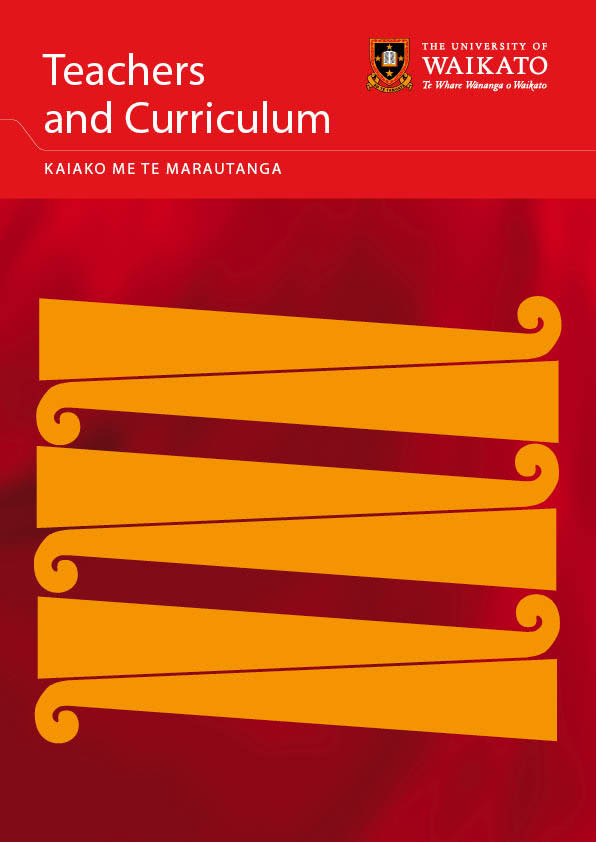Abstract
The New Zealand Ministry of Education encourages schools to update to flexible learning spaces and activate teaching approaches that augment such physical settings. Many schools have embraced the concept of innovative learning environments (ILE) and team teaching, motivating a trend fast gaining popularity in New Zealand primary schools. However, apart from positive self-reporting documentaries from enthusiastic schools, there is a dearth of New Zealand-based information available to assist prospective schools to consider the complexities of adopting this trend. As they venture ‘out of the single-classroom closet’ into a collaborative ‘community of learners’, the staff of one primary school in the Bay of Plenty has been researching their own ILE practices and processes through inquiry, regular appraisal and self-review monitoring. While the school’s experience is contextual and unique to its own specific situation and community, it provides a representation of some affordances and constraints that other schools might contemplate when they similarly venture into ILEs
References
Aitken, J., & Core Education. (2016). Educational positioning system. Retrieved from http://eps.core-ed.org/about-eps
Alterator, S., & Deed, D. (2013). Teacher adaptation to open learning spaces. Issues in Educational Research, 23(3), 315–330
Dumont, H., Istance, D., & Benavides, F. (2010). The nature of learning: Using research to inspire practice. Paris, France: OECD Publications. Retrieved from http://www.oecd.org/edu
Fraser, D., Aitken, V., & Whyte, B. (2013). Connecting curriculum; Linking learning. Wellington, New Zealand: NZCER Press.
Fraser, D., Aitken, V., Price, G., & Whyte, B. (2012). Inquiry learning, drama and curriculum integration. Set, 3, 33–40.
Friend, M., & Cook, L. (2002). Interactions: Collaboration skills for school professionals. (4th ed.). Needham Heights, MA: Allyn & Bacon.
Friend, M., Reising, M., & Cook, L. (1993). Co-teaching: An overview of the past, a glimpse at the present, and considerations for the future. Preventing School Failure, 37(4), 6–10. doi:10.1080/1045988X.1993.9944611
Groff, J. (2012). The practitioner guide: The nature of learning: Using research to inspire practice. Paris, France: OECD publications. Retrieved from www.oecd.org/edu/learningenvironments
Hattie, J. (2015). What works best in education: The politics of collaborative expertise. London, England: Pearson.
Hickey, C., & Forbes, D. (2011). Open space learning: Meeting modern needs or repeating past mistakes? Independent Education, 41(2), 10–13
Kotter J., & Cohen D, (2002). The heart of change. Boston, MA: Harvard Business School Press NHS Improvement Foundation.
Mealings, K. (2013, February 10). Students struggle to hear teacher in new-fad open-plan classrooms. Macquarie University Newsroom. Retrieved from
Ministry of Education. (2016a). Flexible learning spaces webpage. Retrieved from http://www.education.govt.nz/school/property/state-schools/design-standards/flexible-learning-spaces/
Ministry of Education. (2016b). Factsheet: Teaching and learning environments: Impact on student engagement and achievement. Retrieved from
Ministry of Education. (2016c). Factsheet: Māui whakakau, kura whakakau. Teaching and learning environments to support priority learners. Retrieved from
http://www.education.govt.nz/assets/Documents/Primary-Secondary/Property/School-property-design/Flexible-learning- spaces/Maui-Whakakau-TLE-factsheet.pdf
OECD. (2013) Innovative learning environments project. Centre for Education Research and Innovation. Paris, France: Author. doi:10.1787/97892642033488-en
Thousand, J. S., Villa, R. A., & Nevin, A. I. (2007). Differentiating instruction: Collaborative planning and teaching for universally designed learning. Thousand Oaks, CA: Corwin Press.
Tuckman, B. (1965). Developmental sequence in small groups. Psychological Bulletin, 63(6), 384–99.
Verstappen, P. (2015, May 18). Modern learning environments allow pedagogical shifts. Education Gazette, p. 9.
Whyte, B. (2007, September 30). Essence: Learning through drama and other things. Networkonnet. Retrieved from http://www.networkonnet.co.nz/index.php?section=curriculum&id=55
Whyte, B., (with Charteris, C). (2008, September 18). … and the rabbit bobs past!: A developmental classroom. Networkonnet. Retrieved from
http://www.networkonnet.co.nz/index.php?section=curriculum&id=111
Whyte, B., & Knapper, C. (2013). Crafting an interactive museum. In D. Fraser, V. Aitken, & B. Whyte, Connecting curriculum; Linking learning (pp. 83–105). Wellington, New Zealand: NZCER Press.
Whyte, B., (with McGarvey, R). (1996). A morning in a developmental classroom. Developmental Network, 5, 1.
Villa, R., Thousand, J., & Nevin, A. (2008). A guide to co-teaching: Practical tips for facilitating student learning (2nd ed.). Thousand Oaks, CA: Corwin Press.
Williams, M. (2013, April 13). Open Plan classrooms. The Contemporary Teacher. Retrieved from http://thecontemporaryteacher.global2.vic.edu.au/

This work is licensed under a Creative Commons Attribution-NonCommercial-ShareAlike 4.0 International License.

